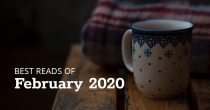What are inflation, deflation, and all the other -flations?
By: Steven Brennan on January 12, 2024_0461f.jpg)
Economic conditions, and the terms that signpost them, are relevant to each consumer. At the same time, these terms can often come across as technical or detached, and it doesn’t help when it seems like there’s a new one being thrown out every other month. If you’re confused, you’re not alone. Read on to figure out what the difference is between inflation, deflation, disinflation and all those other -flations you keep reading about.
What is inflation?
Inflation can be defined as an increase in the average price of goods and services over time. When you notice the same cup of coffee steadily rising in price year after year, that increase is due to good ‘ole inflation.
Price increases are never welcome and have the potential to affect our quality of life if salaries don’t increase respectively. But from an economic perspective, inflation isn’t necessarily good or bad in and of itself — it just depends on why it’s happening and how the economy can react. The central Bank of Canada is responsible for figuring that out, and responding to the rate of inflation in a way that best protects the Canadian economy.
While the root causes of inflation vary from economy to economy, at its core, inflation occurs whenever demand outweighs supply for a sustained period of time. More demand allows businesses to charge more for certain goods and services, but it can also look like business owners passing on rising expenses - whether that’s materials, overheads or production expenses - to their customers.
Another root cause of inflation is an increase in the supply or availability of money. This can happen primarily through low interest rate loans or increased access to credit, leading to greater spending power which will in turn push up the rates of demand.
Related: What is the difference between bankruptcy and consumer proposal?
What is deflation?
While inflation is a result of the demand of certain goods and services outweighing their supply, deflation is when the supply outgrows demand.
When you’re living through a period of high inflation as we are today, deflation sounds like a welcome change, but it’s not quite that simple. Deflation is actually a sign of significant economic problems, according to The Bank of Canada.
This is because a decrease in the cost of goods only really happens when consumer spending reaches extreme lows. And whenever consumer spending is down for a sustained period, that’s usually itself a result of economic uncertainty, high debt levels, and a generally bleak consumer outlook.
The real threat with deflation is when it becomes bad enough to force businesses to downsize or close, which in turn leads to more unemployment and a downward spiral into even less consumer spending.
The last real example of a deflationary period in Canada? You may have heard of the Great Depression, which saw price decreases of over 20 percent in the 1930s.
Related: Historical mortgage rates: Averages and trends from the 1970s to 2021
What about the other -flations?
Inflation and deflation are the most prominent -flations, but they’re not the only ones we've witnessed in recent years. Disinflation is another example and is often confused with deflation. It just means slowing inflation – not to the point where prices are decreasing dramatically, but rather, the market adjusting to lower rate of growth.
You may also have heard of hyperinflation, which is pretty much what it sounds like - a rapidly accelerating increase in the rate of inflation. Hyperinflation is quite rare and typically defined as an inflationary increase of 50% or more from month to month.
Stagflation, which derives its name from the word ‘stagnation’, is a combination of high inflation and high unemployment rates, or slow economic growth overall. The term been thrown around a lot post-pandemic, including recent comments from a former federal banking official stating that the risk may currently be greater than we think. However, the jury is still out as to whether we’ve recently seen, or are heading for, stagnation in Canada.
What’s Canada’s current -flation status?
It’s a bit complicated. Technically, Canada is currently in a period of inflation. The Bank of Canada uses the Consumer Price Index (CPI) to measure the rate of inflation, which combines the cost of many goods and services including food, shelter, clothing, transport and more.
Each month Statistics Canada releases new data on the current CPI, the most recent of which measured at 3.1% for November 2023. This was a repeat of the rate of inflation from the previous month, representing some relative stability, although we’re still a long way off from the Bank of Canada’s ideal rate of 2% inflation.
But while the CPI is still above the target rate of 2%, it’s much lower than the peak of 8.1% experienced in June 2022. That period of inflation was a result of pandemic-era recovery measures introduced by the government that included emergency response benefits and near-rock bottom rate cuts, as well as pent-up demand in sectors like tourism and restaurant dining.
To combat that inflation, the BoC began a series of interest rate hikes, which slowed the pace of lending on things like mortgages, business loans and more, by increasing the cost of borrowing. For a few seemingly interminable months, many Canadians found themselves squeezed by both high interest rates on their mortgages and the rising price of goods.
Keep reading: How your credit score affects the loans you apply for
This madness is not without method – in the BoC’s eyes, the harder it is for Canadians to borrow money, the less demand there would be for household goods and thus, less inflation happening. To that end, the hikes might be working.
To sum up, Canada is actually in a period of disinflation right now, where the rate of inflation has been slowing down — although you and your wallet may be well aware it’s still relatively high.
In any case, if you were hoping that a future period of deflation might save you from your ever-increasing grocery bill, it’s best to go ahead and burst that particular bubble. What we can hope for, however, is more price stability down the line as the Bank of Canada holds interest rates in a bid to curb the rate of inflation long-term.
Read next: 3 things you can expect to spend more money on in 2024
5ec2.jpg)

